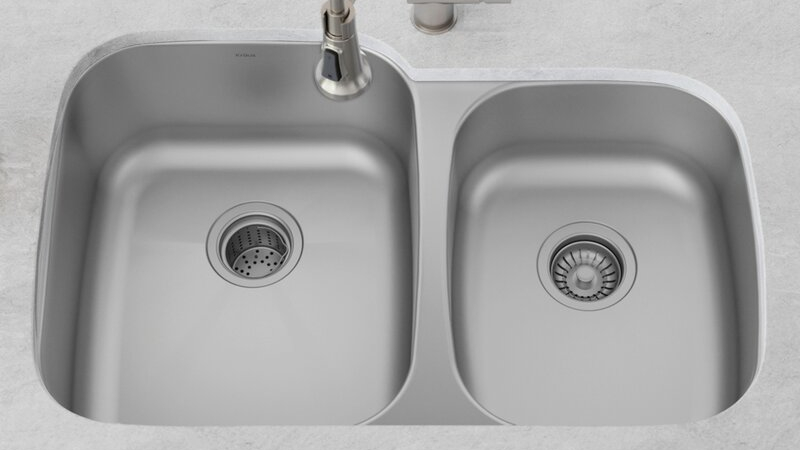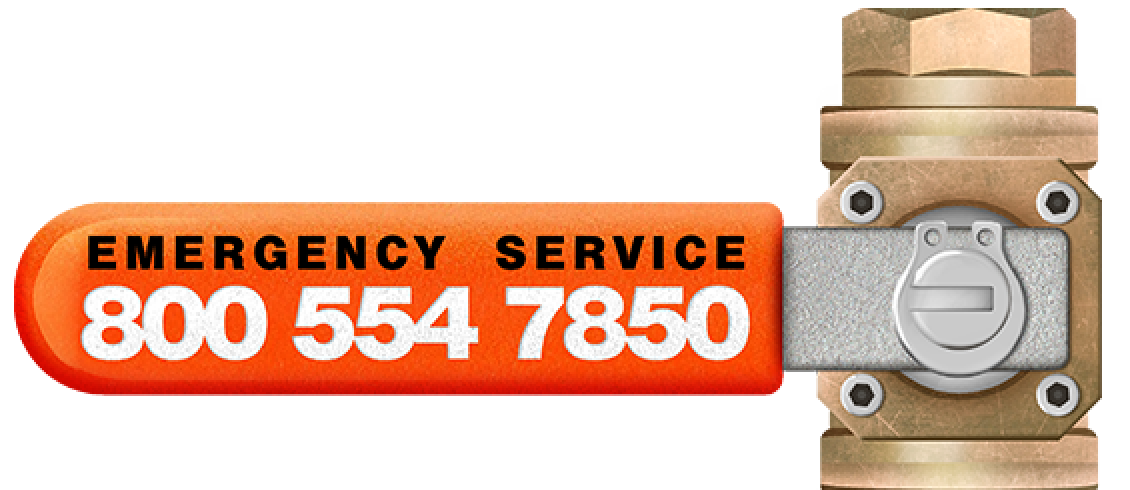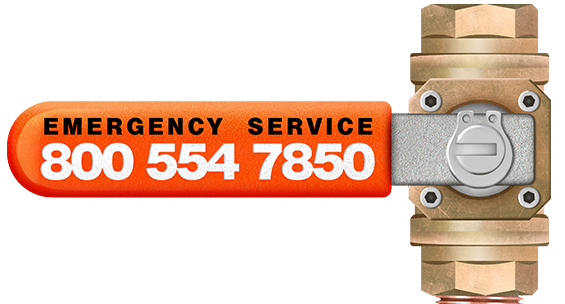Down the Drain Is Good
The drain is probably the least exciting part of your house, refrigerator, A/C, or any of your appliances. I care about what is in my refrigerator, how I can keep cool in the hot summer (ok, and even winter) months of Florida, and I care about the pleasantries of my home. But if you’ve ever had a drainage problem, your drains become a little more interesting. I can’t say they will ever reach the status of exciting, but that’s OK. The mundane parts of life are what make the exciting parts possible.
All drains work on the principle of gravity. There are generally not any mechanisms to push the water out of your home, but just good old fashioned – free – gravity. This is the case with all drains. And we never really even think about it. That is – until it stops up and doesn’t drain when you need it to. I’m sure that has happened to everyone at some point or another. And if not, you might be a good candidate to play the lottery because you’re running on good luck.
If your drains don’t work properly they can be the source of water damage and/or mold. As such, they should be watched for signs of trouble. You don’t need to install security cameras and get alerts on your phone when it detects movement, but you should be aware of the different drains around your home and what could go wrong with them. In this post we are not going to address unclogging the drains, that is for another time. But we will touch on several of the drains in your home that deserve attention so that you can avoid backup problems.
- Drains in your sinks
- Sewer drains, toilet/shower
- Washing Machine
- Dishwasher
- refrigerator
- Air conditioning unit
- Yard
- Roof drains, aka, gutters
Drains in your sink
Every sink has a drain (otherwise we call that a bowl). Some of the components for your sink will include the faucet, the stopper, possibly an overflow drain, and beneath the sink, a P-Trap.
Sinks generally have some sort of stopper so you can capture water for a period of time, and then release it when you’re done. Like when you’re doing dishes or hand washing your delicates. Obviously, when you release the stopper, it should drain. Typically your kitchen sink has a stopper that you can remove and set on the counter. Bathroom sink stoppers could be removable like the kitchen, or built-in. The build-in stoppers have a simple mechanism to open and close the stopper. Test it from time to time and if it fails, take a little time to address it. It is something a plumber or handyman can repair, but it is also something you might be able to repair yourself if you’re so inclined.
Most bathroom sinks these days have some sort of overflow drain built-in. This is an early attempt at child-proofing a home. (That is complete speculation on the part of the writer.) As a child, I liked playing with the water in the sink. Watching things float, and then later watching them swirl as the sink is getting drained. If it hadn’t been for that overflow drain, it’s quite possible I wouldn’t be here today to write about it. (Ok, maybe that’s a little severe, I had good parents.)
The P-Trap Under the Sink

The P-Trap is the little part of the drain that resembles the shape of the letter P (barely). It traps water so that between the sink and the sewer line there is a water barrier. This water barrier prevents odors from the sewer from filling your home. Generally, once installed, it should not require any attention. But you should inspect the area under your sink periodically, looking for indications of a leak.
Any leaks under the sink will provide a critical component needed to grow mold. This is why it is important to be dry under your sinks – kitchen sinks, bathroom sinks, utility room sinks, any sink. Additionally, because there is moisture in your drains, you can grow mold there too. When you do your regular cleaning you should look for that and address it if you find mold in the drain.
Sewer drains, toilet/shower/Tubs
The sewer system in your house starts at the drains. This applies to the drains in the sinks too, but when we think of sewer, the most obvious place to go is the toilet. Like the P-Trap under your sinks, the toilet will have a similar bend in its drain for the same purpose. Once the waste from the toilet is flushed, the bending of the drainage provides a water barrier.
Unlike with sinks, you normally can’t easily inspect the drain for toilets, showers, and tubs. The best thing you can do is to notice the flow of the drain. Does it drain slowly? If so, you might want to address that before it becomes an emergency. If you’re not sure what normal should be, try comparing it to the drain speed of your sinks. That can give you an idea.
While the pipes beyond the drain are not usually observable, there are other signs you can keep an eye out for. Around the base of these items, are they wet for no known reason? If so, there might be a problem with the seals or drainage. Clean up the water and then watch for the problem to return. See if it is coming from above because of a carelessly closed shower curtain, or if it might be an overflow in the drain that is backing up and seeping through the cracks.
Also, if your bathroom is upstairs, take notice of the ceilings and walls downstairs. If you start seeing brown spots, rings, or lines, that’s water and it’s coming from somewhere. If that ceiling is anywhere near an upstairs bathroom, you probably have a leak somewhere. Time to investigate
Washing Machine
The washing machine is pretty simple. There is a drainpipe into which you place the washer’s drain hose. This is a less likely drain to get stopped up or have problems, but you should listen to the drain cycle of the washer from time to time, make sure it sounds normal and not like a bottle getting filled. (You know, that higher pitch as you fill a bottle?)
There could be other water damage problems from washing machines that could happen, but those things are documented in another article about your laundry room.
Dishwasher
The dishwasher, like the washing machine, has plenty of ways it can cause water damage. Also, like the washing mashing, it is going to pump the water out to the drain. This is a possible point of failure. The dishwasher normally pushes the water out to the sink’s drain. You will want to look for any signs of water leaks, not just under the sink where it connects to the kitchen sink drain but also underneath the dishwasher. This is explored in our post about water hiding under your dishwasher.
Refrigerator
The refrigerator is one of my favorite appliances in the house. It holds all of my favorite foods. And a great feature is the ice maker and water supply. The primary concern about water with refrigerators is the supply lines, but in this article, we are talking about the drains. This comes into play with frost-free freezers.
The way the frost-free feature works is by using heating elements inside the freezer, a timer, and a thermometer. Frost builds up because of the humidity in the air inside the freezer. The timer will engage the heating element to melt the frost. The thermometer makes sure that the heating elements are turned off after reaching the melting point. The water from the melted frost is then drained to the outside of the refrigerator where it is then expected to evaporate into the air.
If this drain gets plugged the water won’t drain properly and will instead build up ice in the freezer. If the drained water doesn’t evaporate quickly enough, it can allow mold to begin to grow. Check the owner’s manual for your model of the refrigerator to identify the drain pan and monitor the results of this feature. It is possible that you may see little to no moisture in the drain pan because there isn’t much frost growing in the freezer. If your home humidity levels are kept low, it may never even be an issue.
Air conditioning unit
Growing up without air conditioning in my home has made me appreciate air conditioning. It is a standard in every building in Florida today and its all based on the same science we use in water emergency mitigation. Fluid dynamics and thermodynamics.

The short version is that the air conditioner cools the air and blows it throughout your home. When the air cools, the moisture in the air converts from vapor to liquid. That liquid has to go somewhere. Depending on where you’ve installed your air conditioning unit, this could be an issue or it might not be. If you have a window unit, the water is likely just let out onto the ground.
If you have an outside unit, it probably has a pan to collect the water and a drainage system to drain the water to a safe place. You should check the A/C to make sure that it is draining away from the house. We’ve seen a situation where the A/C water didn’t drain properly and soaked the home’s slab, found its way under the flooring, and got a whole section of the wood flooring wet. It had to be removed, dried out, and replaced. All because the A/C didn’t drain its water properly.
Another popular place where air conditioning units might be installed is the attic space. The same issue with water exists here as well. If the drain system gets plugged or otherwise fails, all of the excess water from the A/C will overflow the drain pan and you can expect water damage to the ceilings inside your home.
A good thing to do is find out how your A/C drains its excess water and look at it every time you go by it to make sure that if the A/C is running, that it is draining something. If not, investigate.
Yard
When you have a drainage problem in your yard there are a couple of reasons. Sometimes it’s because of a broken pipe or water main, in which case it’s not so much a drainage problem as a leak problem and the drainage can’t handle the amount of water coming from the breakage.
But then there are times when there is just a lot of water coming onto the yard. It can rain long and hard in Florida and if there isn’t proper drainage, it can cause problems with your concrete slab. Construemax can help you in situations where the ground under the home is so saturated that it starts to push its way through the pores of the concrete and the cracks that may well have been created during the settling of the home. It can infiltrate the home, damage your flooring, and even cause mold to grow.
So you need to make sure you have good drainage in your yard. Consult with landscaping experts who specialize in drainage and they can help you develop a strategy for dealing with drainage problems.
Roof drains, aka, gutters
When it rains hard there can be a lot of water come down in a short time. And the roof does a great job of running the water off to the sides of your building rather than coming inside your home or business. When it does this, gutters will capture and direct the water to where you want it to go.
Just like everything about the yard just mentioned above, if the water isn’t being directed away from the home, the concrete slab can get compromised and you could start experiencing water intrusion from below.
Perhaps the most common cause of slab leaks is improperly channeled rainwater. It’s usually a fairly simple fix with the use of splash blocks that you can get from any place that sells hardware and items for the outdoors of your home. They don’t cost too much and they are an integral part of your outdoor drainage system.









